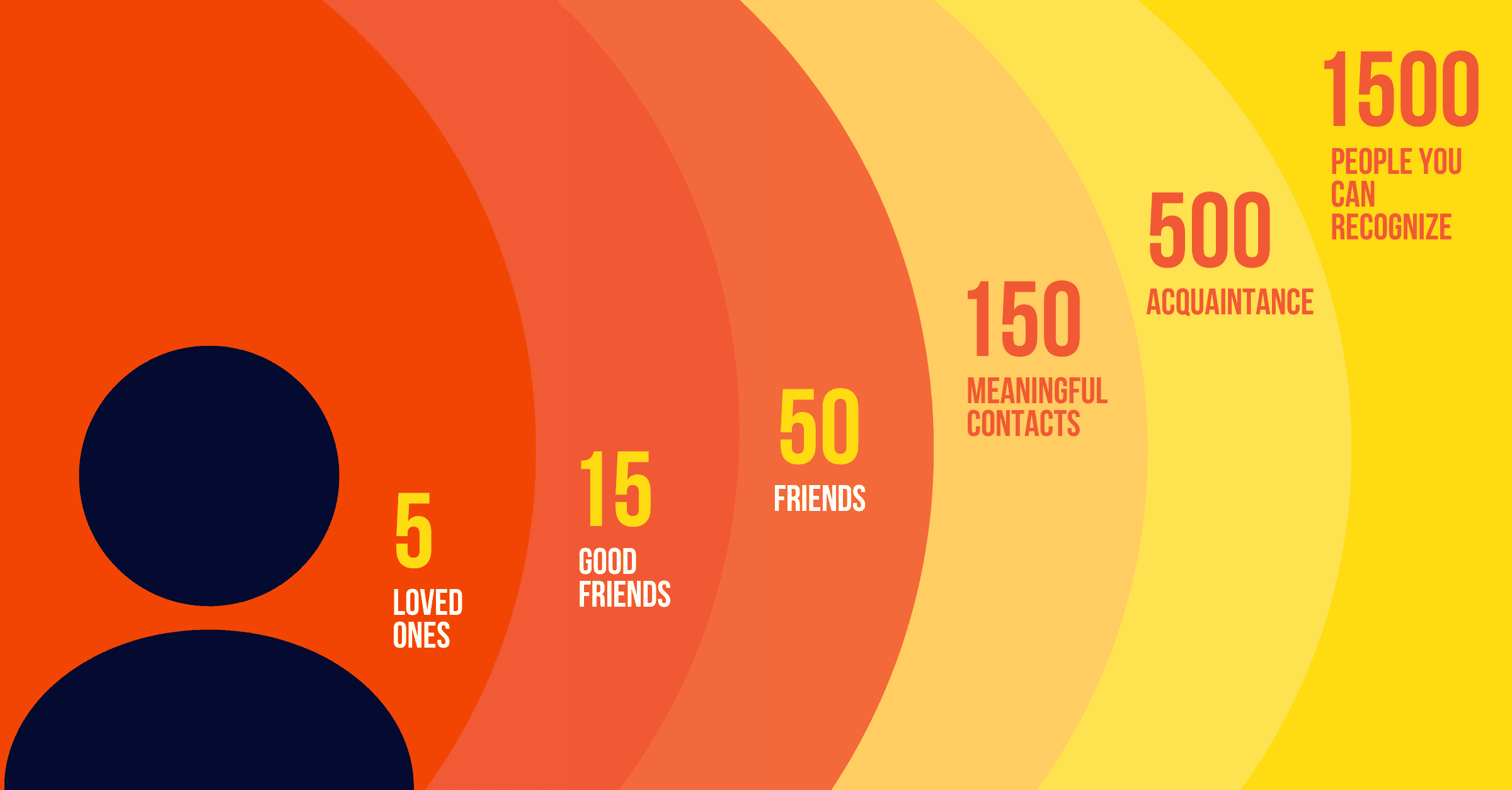


According to the British anthropologist, Robin Dunbar, the “magic number” when it comes to social connections - the maximum number of meaningful relationships we can maintain - is 150. As humans, 150 social connections are all we have the mental and emotional fortitude to deal with. And not all relationships are created equal. Dunbar goes on to suggest that there are many layers to social connections. You can maintain 5 loved ones, 15 good friends, 50 friends and so on.

At this point you’re probably working out how to bucket your friends and family into these different groups, but the truth is the grouping of connections comes down to frequency of contact or, more bluntly, how much time we can afford to give each person.
Typically, in retail and ecommerce we bucket customers into one, brand exclusive, sales funnel rather than appreciating that we are simultaneously competing in an ever-changing ranking. Over the past two years factors such as Covid and Brexit have created a significant shift in audiences and shopper preferences to the online marketplace. This created a huge opportunity for digital first brands and savvy digital marketers to acquire new customers and grow market share while brand relationships were still nascent and forming online, and the more traditional retailers were still playing catch up.
But that was then, and this is now. The dust has settled on 2020 but it is likely that the online playground is going to continue to develop and become more congested. While brands like Next finally get their ducks in a row digitally, consumer behaviours have started to settle into more of a fixed pattern and, if Mr Dunbar is to be considered, they will have started creating their very own brand buckets.
Growing market share purely relying on acquisition will become more difficult and expensive to do (and this is before we even get started on the implications of Google’s 3rd party cookie deprecation). This is further evidenced by digital giants like ASOS and Boohoo acquiring Arcadia brands and Debenhams for large sums to swell their databases rather than gradually growing them via more traditional means.
In 2021, brands who focus on understanding their customers’ relationship with them and finding effective ways to increase the frequency of interactions will drive more growth in market-share than those brands more focused on trying to increase the connections they have.
Ring-fencing your top 15 connections loyalty will be vital and, according to Mr Dunbar, should be designed to increase frequency of connection. Our research with Retail Week aligns with his theory, as we found that most people only actively participate in 2.8 loyalty schemes. Brands should use the data they have on their members to inform their programmes and ensure relevancy. Loyalty has moved on significantly from the days of “discount clubs”, and getting it right not only creates revenue but can also create self-funding first party data assets and drives down fulfilment costs.
Brands typically struggle to connect their digital web data accurately to their SCVs and owned channels. For ecommerce businesses this connection is a must. Rather than looking purely at transactional data or logged in users (typically 20% or less), websites and emails can give brands a better understanding of subtle changes in customer engagements and frequencies to help establish if or how a customers’ relationship is evolving (or diminishing). It is vital that digital marketers are involved in any CDP discussions as the importance of digital identity and signals are quite often forgotten when evaluating SCV technology.
To maintain a frequency with our acquaintances it makes sense to use channels where they are the most. YouGov states that 66% of a user's time online is spent on the open web, yet only 32% of advertisers spend goes there. Many of the brands we work with have seen significant sales uplift by using more ID led solutions to enable them to shift some of their traditional site re-targeting budgets from recent to more historical web traffic looking to maintain and increase frequency of contact with these acquaintances rather than investing more budget in creating brand new ones.
As humans we bucket our relationships and prioritse accordingly. Online growth has enabled many brands to create new relationships but, as this starts to settle, they'll see decreasing acquisition opportunities and increased competition. I encourage you to delve into the data you have and flip your thinking from what you think about a customer to what a customer thinks about you. This can help you create more personalised and relevant programmes depending on your current relationship status. Making new friends is great, but there’s nothing quite like meeting an old friend, picking up where you left off, and building an even better relationship.